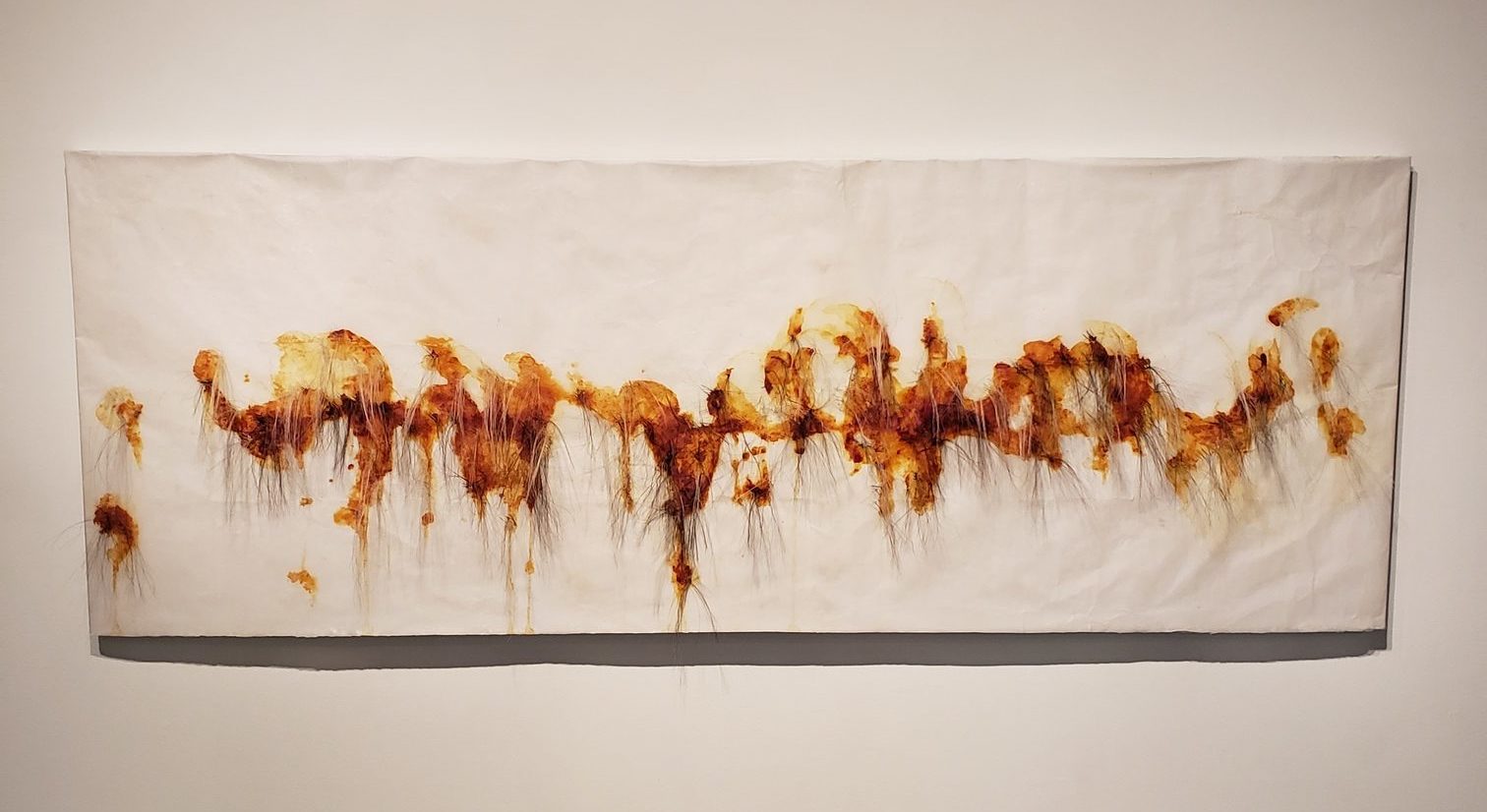
03 Mar Examining Expectations with Flavia D’Urso at Grand Central
In the current exhibition, “Slippage of a Strand,” at Grand Central Art Center in downtown Santa Ana, artist Flavia D’Urso attempts to convey the feelings of a queer woman and how identity and sex can cause feelings of unrest and at times, conflict with others. D’Urso thoughtfully utilizes repetition and replication with her symbolic works of art as she dissects the societal expectations of female and queer identity.
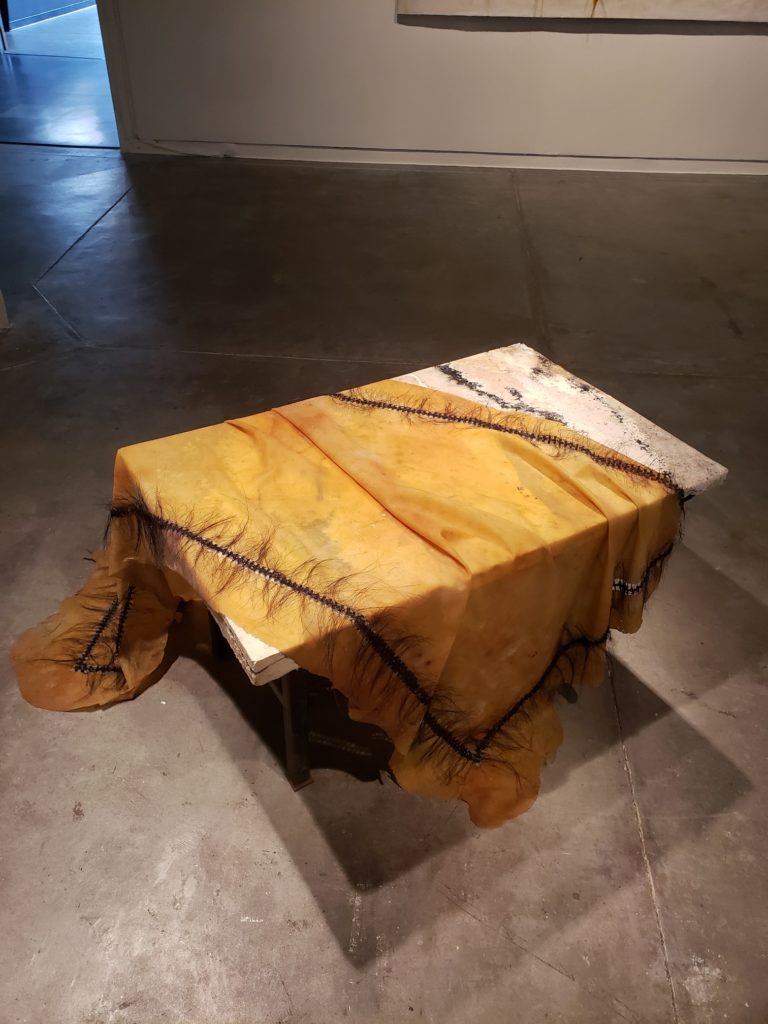
There are many expectations in our society for women, including appearances, activities and behaviors. I Will Not Carry You by Flavia D’Urso addresses a woman’s “duty” to bear children which is visually subtle but contextually powerfully. This piece features 10 pots, all placed on pedestals, each one more malformed than the other. All except for one, the center piece—a “perfect” example of what a pot ought to be.
Using mixed media, D’Urso creates the first nine pots with salt. Each pot has some form of a defect like an improper shape or holes in different places on the pots, rendering them useless or defective. One pot lies broken on the floor, unfixable and unusable. However, there is the one, pristine pot in the center, on the highest pedestal. The one pot made of terra cotta. The symbolism D’Urso uses conveys the societal pressures of a woman to bear a child, to “perform” their duties as life-givers lest they be labeled as “broken” or “damaged goods.” Many women are still pressured to have children and even at times must choose between family and career, but D’Urso challenges this system of imposition by bringing the emotions of strife and imprisonment to the forefront of our interpretation. The use of pots is also a fascinating symbol in this piece, as it reinforces the notion of women as vessels for something else—supposedly empty when on their own and only meant for holding something or someone else.
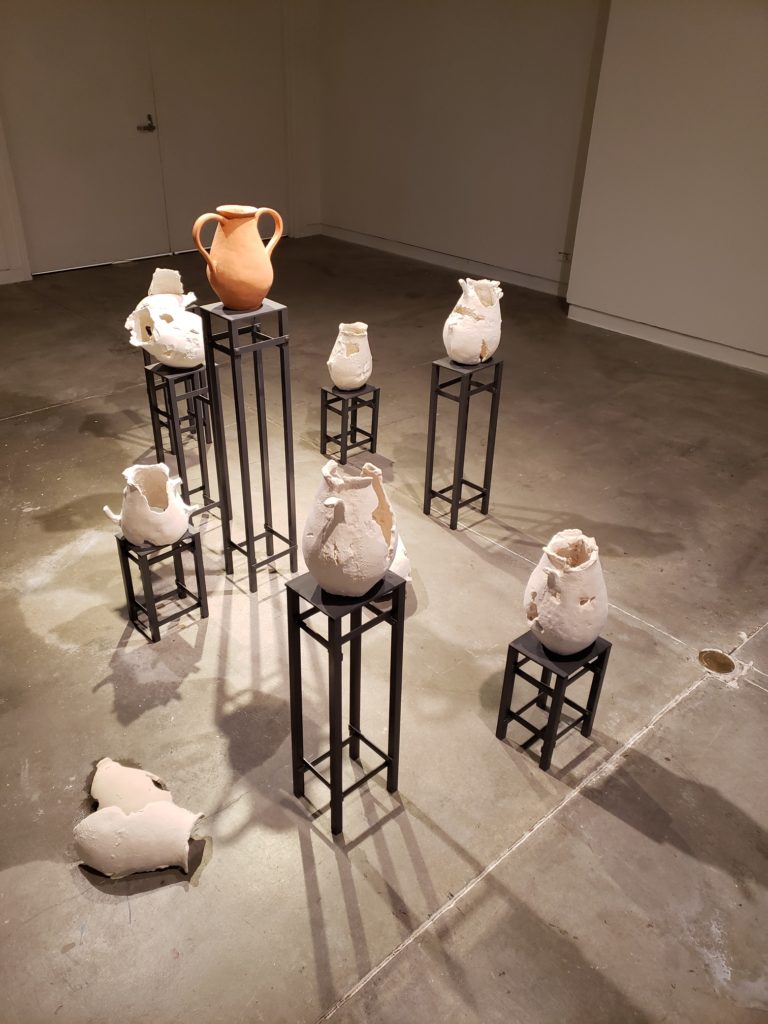
D’Urso’s video work, In an attempt to stay in line, explores the idea of gender expression and how it finds itself at odds with the “norm.” The viewer is presented with two, large television screens that displays a pitch, white color. Slowly, from opposite ends, small parts of the white plains are brushed away. However, while it may seem like a brush stroke at first glance, it is being licked away. This subtle difference instills a feeling of discomfort that works in tandem with the message that is being slowly relayed. The large white plains represent a form of normality in society, but the moment anyone deviates, no matter how subtle, it ruins that vision and begins to agitate. Each little change in one’s gender expression chips away at that preconceived idea of normality, just like each lick destroys the white field.
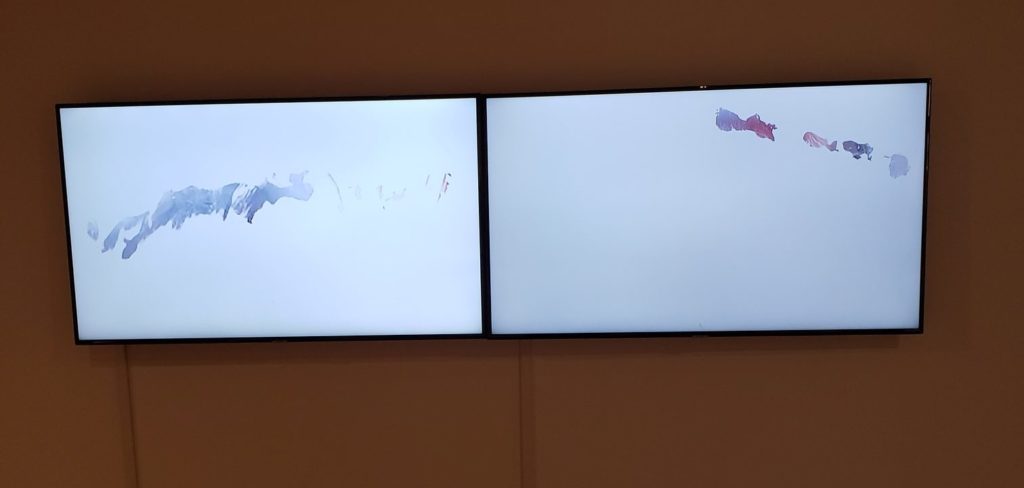
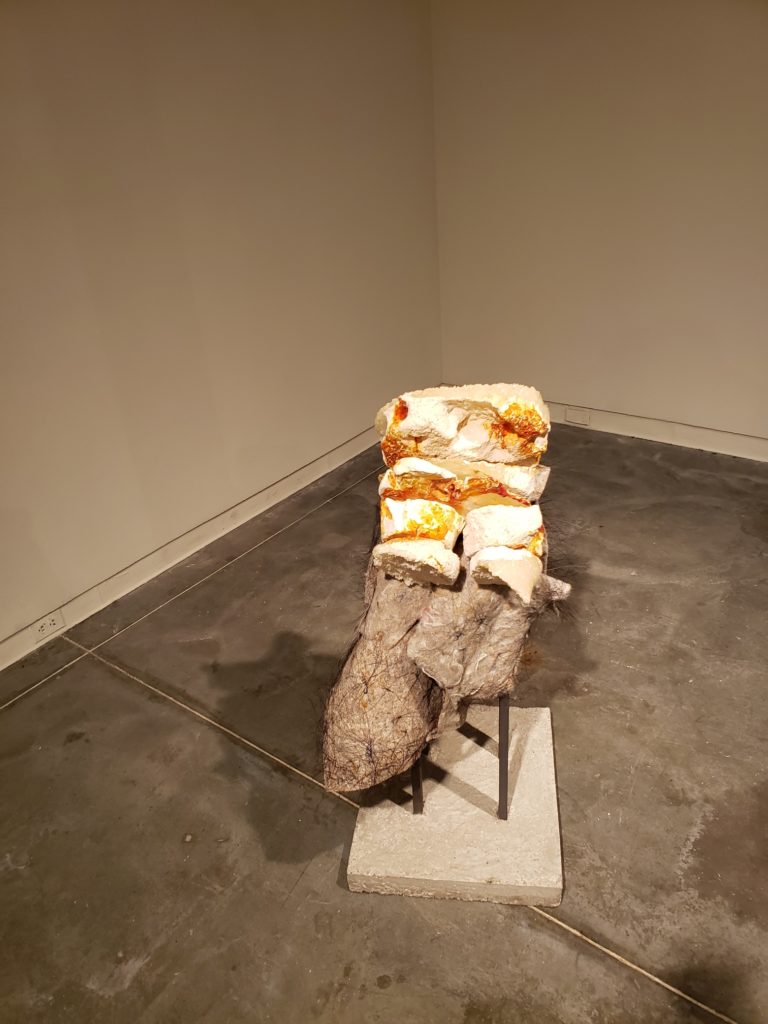
D’Urso’s many other works on display each use a form of mixed media expression that is fascinating and deceiving to the eye, including salt, horsehair, blood meal, paper, terra cotta, and latex. Each piece is meant to assert itself by demanding the right to exist as it is to each viewer that looks upon them. This is much like the struggle that many find themselves in today, not only trying to accept themselves, but to be accepted and respected by our larger culture.
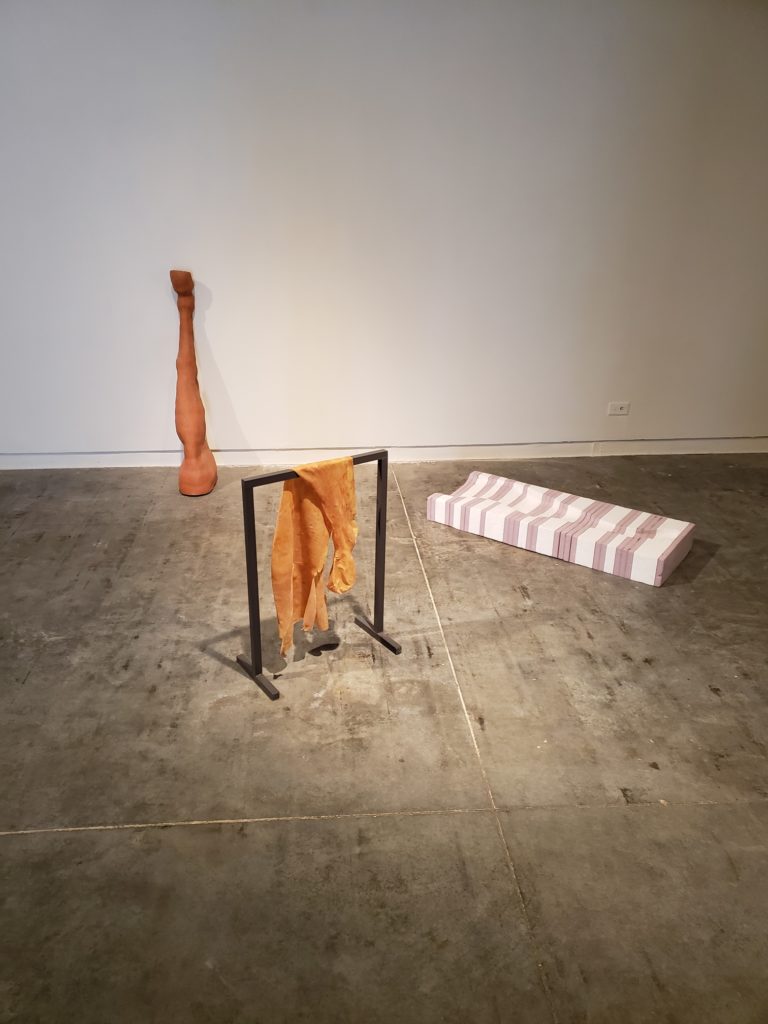
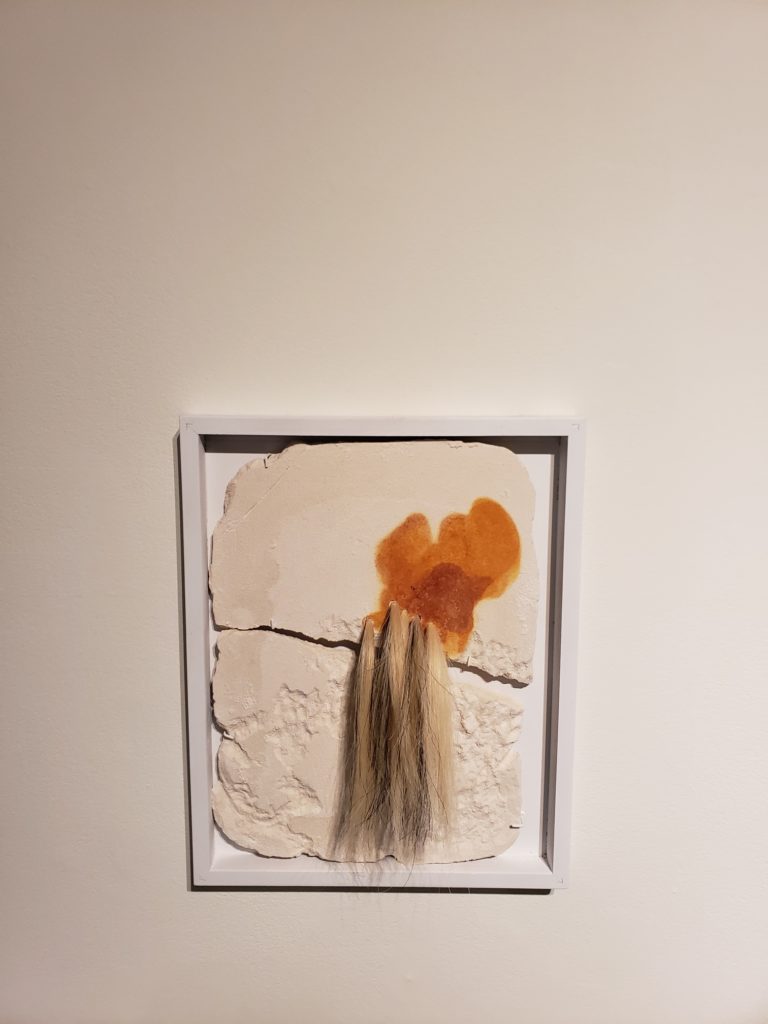
“Slippage of a Strand” is on view through May 10, 2020 at Grand Central Art Center, 125 N. Broadway, Santa Ana, 92701. grandcentralartcenter.com.



Sorry, the comment form is closed at this time.